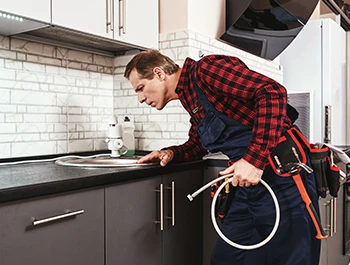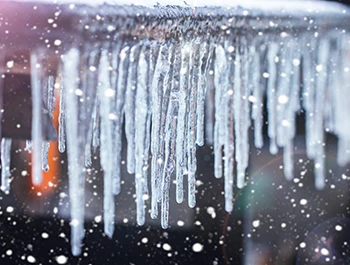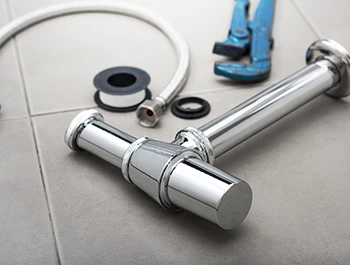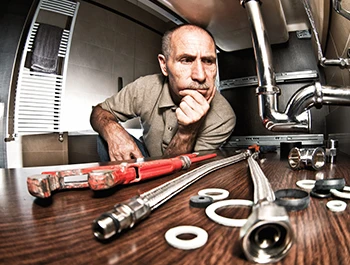Water is essential for our daily lives. We use it for drinking, cooking, cleaning, and shower. So, when we turn on the tap and no water comes out, it can be a frustrating and alarming experience. No water coming out of the tap can be caused by several reasons, ranging from minor issues such as a clogged aerator to more complex ones like frozen or damaged pipes. Whatever the cause, it’s important to act fast to prevent further damage and inconvenience.
This blog post will discuss the possible causes of no water from the tap, including broken or leaky pipes, frozen pipes, water shut off, and airlocks in pipes. We will provide step-by-step troubleshooting tips on resolving the issue, including checking the main valve aerator and for leaks or airlocks. We will also provide common mistakes to avoid while troubleshooting the issue.
Possible Causes and solution of the Problem
Here are some of the best and potential causes and solution of the no water coming out of tap problem.
A. Broken or Leaky Pipes

When you turn on your tap and no water comes out, it can be a frightening and frustrating experience. This issue can occur for various reasons, such as broken or leaky pipes. This section will discuss the possible causes of this problem, focusing on broken or leaky pipes.
Signs to look out for: Some signs can indicate that you have broken or leaky pipes. These signs include decreased water pressure, dampness or water stains on walls or floors, a musty or moldy smell, and running water when no taps are turned on.
Possible solutions: If you suspect that broken or leaky pipes are the cause of your no-water issue, there are some steps you can take to resolve the problem. Here are a few possible solutions:
- Inspect the pipes: The first step is to inspect the pipes for any visible signs of damage, such as cracks or leaks. Call a professional plumber to repair or replace the affected pipes if you find any damage.
- Check the water meter: If the water meter is still running when all taps are turned off, this could indicate that there is a leak in the pipes. In this case, you should call a plumber to locate and repair the leak.
- Unblock clogged pipes: Clogged pipes can also cause a lack of water flow. If you suspect this is the problem, you can use a plunger or drain snake to clear the blockage. If this doesn’t work, call a plumber.
- Regular maintenance: To prevent pipe damage in the first place, it is important to schedule regular maintenance with a professional plumber. This can include inspections, cleaning, and repairs as needed.
B. Frozen Pipes

Another possible cause of the “no water coming out of tap when turned on” problem is frozen pipes. This can occur during the colder months when temperatures drop below freezing. This section will discuss the signs to look out for and possible solutions for this issue.
Signs to look out for: If you suspect that frozen pipes are causing the lack of water flow, there are some signs to look out for. These signs include frost on the pipes, decreased water pressure or no water flow, and strange noises coming from the pipes.
Possible solutions: If you suspect that frozen pipes are the cause of the problem, there are some steps you can take to resolve the issue. Here are a few possible solutions:
- Locate the frozen pipes: The first step is to locate the frozen pipes. You can check all exposed pipes, such as those in the basement, attic, or crawl space.
- Apply heat: Once you have located the frozen pipes, you can try to thaw them out by applying heat. You can use a hairdryer, space heater, or heating pad to apply heat to the frozen pipes.
- Turn on faucets: While you are thawing out the frozen pipes, it is important to turn on the faucets to allow water to flow through the pipes. This will help to melt the ice faster and prevent any damage to the pipes.
- Prevent future freezing: To prevent pipes from freezing, you can insulate them with foam or fiberglass insulation. You can also leave cabinet doors open to allow warm air to circulate around the pipes.
C. Water Shut Off
Sometimes the cause of no water coming out of the tap when turned on can be as simple as the water shut off. This can occur for various reasons, such as scheduled maintenance or repairs. This section will discuss the causes and possible solutions for this issue.
Signs to look out for: There are several reasons why your water may be shut off. These include scheduled maintenance by the water company, repairs to the water supply system, or even an unpaid water bill. Sometimes, a water shut-off can also be due to an emergency, such as a broken water main.
Possible solutions: If you suspect that a water shut-off is the cause of the problem, there are some steps you can take to resolve the issue. Here are a few possible solutions:
- Check with your water company: The first step is to contact your water company to see if scheduled maintenance or repair is causing the shut-off. They may also be able to tell you if an emergency affects your water supply.
- Check the shut-off valve: Another possible cause of the problem is a shut-off valve that has accidentally been turned off. Check the valve near the water meter or where the main water supply enters your home to ensure it is open.
- Pay your water bill: If your water shut off is due to an unpaid water bill, you must pay the bill to have your water turned on.
- Wait for repairs: If your water shut-off is due to repairs or an emergency, you may need to wait until the repairs are completed before your water is turned back on.
D. Airlock in the Pipes
Another possible cause of no water coming out of the tap when turned on is an airlock in the pipes. This can occur when air gets trapped in the pipes, preventing water from flowing through. This section will discuss the causes and possible solutions for this issue.
Signs to look out for: Airlocks in the pipes can be caused by several reasons, such as a burst pipe or a recent repair to the plumbing system. They can also occur if the water supply has been turned off for an extended period or if the system has not been used for some time. Another common cause of airlocks is when the plumbing system has been drained for maintenance or repair work.
Possible solutions: If you suspect that an airlock in the pipes is causing the lack of water flow, there are some steps you can take to resolve the issue. Here are a few possible solutions:
- Locate the airlock: The first step is to locate the airlock. You can do this by turning on all the faucets in your home, starting with the lowest faucet and working your way up to the highest. This will help to release any trapped air in the system.
- Turn off the water supply: Once you have located the airlock, turn off the water supply to your home.
- Open the faucets: Next, open all the faucets in your home, starting with the lowest faucet and working your way up to the highest. Leave the faucets open until water starts to flow freely.
- Release the airlock: To release the airlock, you can use a hose or a bucket of water to pour water into the affected faucet or pipe. This will help to push the trapped air out of the system and allow water to flow freely.
An airlock in the pipes can commonly cause no water flow when the tap is turned on. By being aware of the causes and taking steps to release the airlock, you can ensure a steady flow of water in your home. If you are still trying to figure out how to proceed or the issue persists, it is always best to call a professional plumber for assistance.
How to Troubleshoot the Problem?
Here is the details on how to troubleshoot the problem.
A. Step-by-step guide on how to troubleshoot the issue
If you are experiencing the problem of no water coming out of the tap when turned on, there are several possible causes, as discussed in the previous sections. In this section, we will provide a step-by-step guide on how to troubleshoot the issue.
- Checking the main valve: The first step in troubleshooting the issue is to check the main valve that controls the water supply to your home. Ensure the valve is fully open and not partially closed, which could restrict water flow. If the valve is fully open, move on to the next step.
- Checking the aerator: The aerator is a small device at the end of the faucet that mixes air with water to reduce splashing. It can become clogged with mineral deposits or debris, restricting water flow. To check the aerator, unscrew it from the faucet and inspect it for blockages. If you find any debris, clean the aerator and reattach it to the faucet.
- Checking for leaks: Leaks can also cause a lack of water flow from your taps. Check all visible pipes and fittings for leaks. If you find any leaks, repair them promptly. If you cannot find any visible leaks, move on to the next step.
- Checking for airlocks: As discussed in the previous section, airlocks can occur when air gets trapped in the pipes, preventing water from flowing through. Follow the steps outlined in the previous section to release any airlocks.
If you have completed all of these steps and are still experiencing a lack of water flow from your taps, it may be time to call a professional plumber to investigate the issue further.
B. Common mistakes to avoid while troubleshooting

While troubleshooting the problem of no water coming out of the tap when turned on, there are some common mistakes that you should avoid to prevent further damage or complications.
- Over-tightening the faucet handle: One common mistake people make when troubleshooting is over-tightening the handle. This can damage the faucet and make the problem worse. If the faucet is already tight, forcing it further may cause the washer to become damaged or dislodged, resulting in a leak. To avoid this mistake, apply only enough force to tighten the faucet handle snugly, but not excessively.
- Using excessive force: Another common mistake is using excessive force when trying to fix the problem. This can cause damage to pipes or fittings, leading to leaks or other problems. Always apply gentle pressure and avoid using tools or excessive force, especially if you are unsure what you are doing. Stop and seek professional assistance if you encounter resistance when turning a valve or faucet handle.
When troubleshooting the problem of no water coming out of the tap when turned on, it is important to avoid these common mistakes. Over-tightening the faucet handle or using excessive force can cause further damage to your plumbing system, leading to more expensive repairs in the future. You can identify and resolve the issue without causing further damage by being patient and gentle in your approach. If you are still trying to figure out how to proceed or the problem persists, it is always best to call a professional plumber for assistance.
When to Call a Professional?

When experiencing the problem of no water coming out of the tap when turned on, it can be tempting to try to fix the issue yourself. However, certain signs indicate when it is time to call a professional. This section will discuss those signs and the advantages of seeking professional help.
Signs that Indicate a Need to Call a Professional:
- Damage to the pipes: If you notice damage to your pipes, such as cracks or corrosion, it is important to call a professional plumber. Attempting to fix the issue yourself can cause further damage, leading to costly repairs in the future.
- Difficulty in accessing the main water valve: The main water valve controls the water supply to your entire home. If you are experiencing difficulty accessing or turning off the valve, it is important to call a professional. Trying to force or break the valve can cause irreparable damage to your plumbing system.
- Repeated occurrence of the problem: If the problem of no water coming out of the tap when turned on keeps occurring, even after you have attempted to troubleshoot the issue, it is time to call a professional. There may be an underlying issue that requires the expertise of a professional plumber to resolve.
Advantages of Seeking Professional Help:
- Expertise and Experience: Professional plumbers have the necessary expertise and experience to identify and resolve complex plumbing issues. They have the tools and equipment to diagnose the problem and recommend the most effective solution.
- Time-Saving: Attempting to fix the problem yourself can take up much time, especially if you are unsure what you are doing. Calling a professional plumber saves you time and effort, as they can quickly identify and resolve the issue.
- Cost-Effective: While calling a professional plumber is an added expense, it can be cost-effective in the long run. Attempting to fix the issue yourself can cause further damage, leading to more expensive repairs in the future. A professional plumber can resolve the issue efficiently and effectively, saving you money on future repairs.
- Peace of Mind: When you call a professional plumber, you can know that the issue will be resolved correctly. This can save you from the stress and frustration of dealing with recurring plumbing problems.
While it may be tempting to try to fix the problem of no water coming out of the tap when turned on yourself, certain signs indicate the need to call a professional plumber. Seeking professional help provides you with the necessary expertise, saves you time and effort, is cost-effective in the long run, and gives you peace of mind. If you are experiencing any signs mentioned above or are unsure how to proceed, it is best to call a professional plumber for assistance.
Frequently Asked Question
1. Why is there no water coming out of my tap?
There could be various reasons for no water coming out of the tap, including frozen pipes, water shut off, an airlock in pipes, or broken or leaky pipes.
2. How do I fix no water coming out of the tap?
First, troubleshoot the issue by checking the main valve aerator for leaks or airlocks. If the problem persists, it may be necessary to call a professional plumber.
3. Can I fix the problem myself?
It depends on the cause of the issue. You can troubleshoot basic issues, such as checking the main valve and aerator, by yourself. However, more complex issues like frozen or damaged pipes require the expertise of a professional plumber.
4. What should I do if I suspect frozen pipes?
If you suspect frozen pipes, turn off the main water supply and contact a professional plumber immediately. Do not attempt to thaw the pipes, which can cause further damage.
5. How can I prevent no water from coming out of the tap?
Prevention methods include
insulating pipes in colder temperatures,
regularly checking for leaks and addressing them promptly, and
turning off the main water supply if you leave your home for an extended period.
6. How much does fixing no water coming out of the tap cost?
The cost of fixing no water coming out of the tap can vary depending on the cause of the issue and the extent of the damage. Troubleshooting basic issues may be free or cost a minimal amount, while more complex issues may require significant repairs and cost more. It is best to consult a professional plumber to determine the issue’s cost.
Final Discussion
Overall, no water coming out of the tap can be a frustrating and alarming experience. It’s important to identify the cause of the problem and take prompt action to resolve it. This article has provided a comprehensive guide on the possible causes of the issue, including broken or leaky pipes, frozen pipes, water shut-off, and airlocks in pipes. We’ve also provided step-by-step troubleshooting tips and common mistakes to avoid.
It’s important to be prepared for plumbing emergencies and know how to troubleshoot common problems like no water coming out of the tap. Additionally, knowing when it’s necessary to call a professional plumber can save time, money, and stress in the long run. Remember to take prompt action if the problem persists, as this can prevent further damage and inconvenience.
Being informed and prepared can help you deal with plumbing emergencies like no water coming out of the tap. Following the tips and advice in this article, you can quickly and effectively resolve the issue and return to your daily routine.
